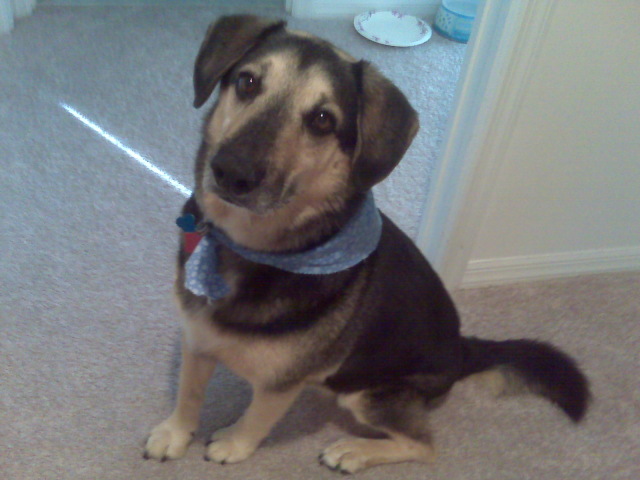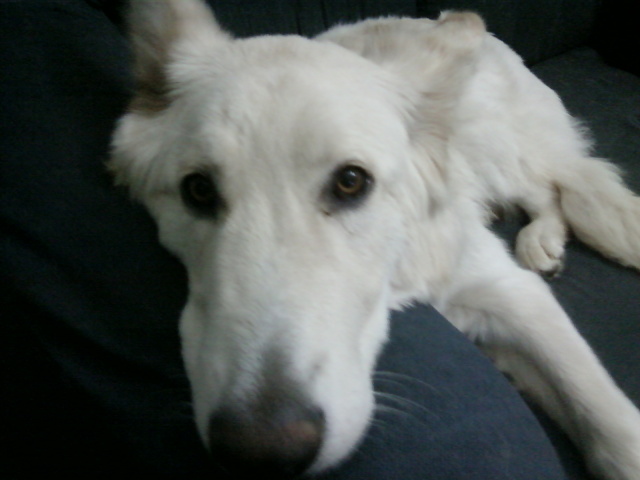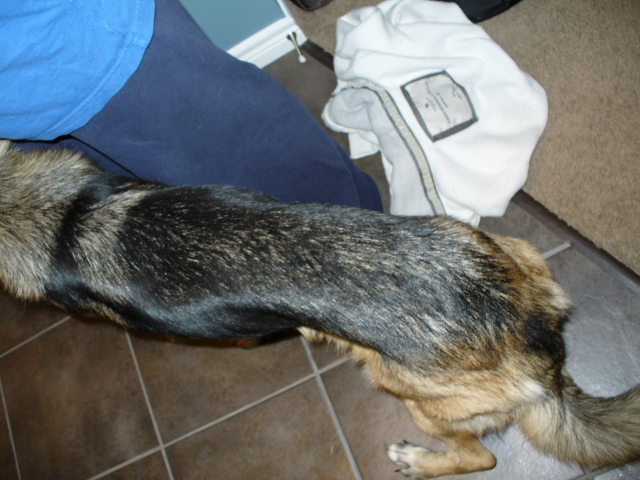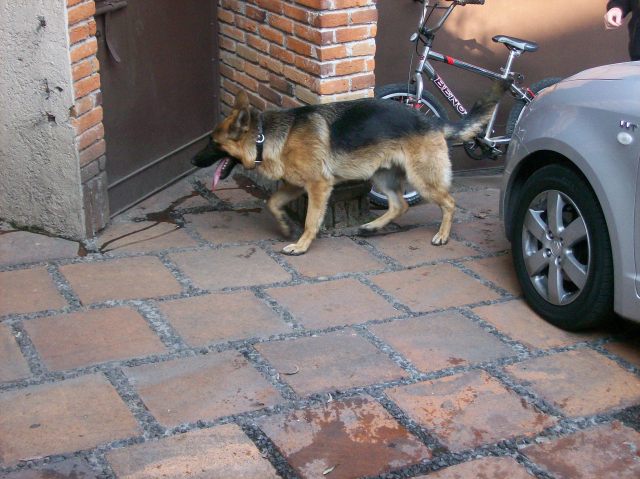Question
 Harley
Harley
Hello,
I have a 6 1/2 year old German Shepherd mix (not sure what he is mixed with) that is 59lbs (slightly overweight right now but losing weight with exercise). Recently I was told by a groomer that raw foods are the best food to feed my dog (and all dogs); such foods including cooked meats, grains, and raw vegetables. All I have ever fed him is dry dog food so I am not sure what is the best to choose for him. Do I switch over to what the groomer said or stay with the dry dog food? Either way, how much should I feed him and how often (of each-separately of course)?
Thanks a million!
AnswerStay with the dry food. Suppose you knew a breeder that bred hundreds of dogs a year, mostly Labs, Shepherds, and Goldens. They provided all the medical care for most of them the first year. At the end of it, they did a complete physical including hip X-rays on all of them. They then spent $35,000 training them before giving them away. They have a large data base of breeding records. Dogs with any physical or temperamental problems are unfit for the program and are a waste. Their well equipped clinic and vet staff are available for serious problems as long as the dog is working. When the dog is no longer able to work, it is replaced at again the $35,000 plus a large emotional upheaval for the person depending on the dog. They have experimented with different diets and exchanged data with other such breeders. Don't you think that what ever they are feeding is healthy and safe? What kinds of controlled studies do you have backing your choice of diet? How objective are the sources of your information? Is your dog's health, their top priority?
I have been raising puppies since 1991 for a large dog guide school that does exactly that. What do they feed? They instruct us to feed Pro Plan chicken and rice puppy chow until 4 months and then switch to adult Pro Plan chicken and rice. I know enough of the people with the trained dogs to know they continue the Pro Plan. The group I meet with monthly for training includes people that have raised puppies for 6 different service dog schools. Some of them are feeding other common commercial chows including Iams and Eukanuba. Any dog owner wanting a healthy, long lived dog can make this regimen work, leaving more time to spend on the dog. It is also relatively economical.
The BARF or raw diet is built on many fallacies, starting with the idea the chicken from the supermarket is similar to natural prey. Not so. At the processing plant, all the nutritious insides including the organ meats are removed. They are sold to the commercial dog food producers. Have you ever seen a predator eat a kill? What do they eat first? Right, all those nasty byproducts that go into the commercial dog food.
The AVMA condemns the BARF diet. And they are not concerned about contaminating you and your families food handling all that raw meat in your house. The FDA and the CDC are. If you do go with it, practice good sanitation.
How much? Nobody can say, but you can easily learn to tell exactly what is right for your dog. Your dog definitely should be narrower at the waist than the hips and chest. You should be able to easily feel the ribs, but not see them. Each dog is different. Standard recommendations are a good place to start, but each dog must have its food and exercise adjusted to its individual needs. Here is a link to a good illustrated guide, http://www.longliveyourdog.com/twoplus/RateYourDog.aspx
Often Shepherds keep themselves trim, but even some purebred ones will over eat especially when a little older.


 A traumatic experience
Question
Kelsie
Hi, we have two dogs and the second one
A traumatic experience
Question
Kelsie
Hi, we have two dogs and the second one
 Very thin German Shepherd
Question
Sadie
Hi
We are having problems getting our
Very thin German Shepherd
Question
Sadie
Hi
We are having problems getting our
 poor growth because bad nutrition
Question
7 month
I bought a female gsd when she was 7 m
poor growth because bad nutrition
Question
7 month
I bought a female gsd when she was 7 m
 purebreed german shepherd?
Question
king
I purchased a dog 2months ago and he weig
purebreed german shepherd?
Question
king
I purchased a dog 2months ago and he weig
 doubts on my GSD growth
Question
Tosco Dog
Hi Labman, I wanted to ask you until
doubts on my GSD growth
Question
Tosco Dog
Hi Labman, I wanted to ask you until